It is often said that photographing regularly in the same place, or area, can result in boring and repetitive photos. For sure it has happened to me several times, with the resulting frustration. Such is the case of the SW Alentejo and Vicentina Coast Natural Park, where I have been photographing regularly for 30 years. One of my favorite locations is around Cabo Sardão, near the village of Cavaleiro; whenever I can I go there, even if it is only to walk and admire the landscape. The dramatic interaction between the tall rocky cliffs and the constant pummeling of the waves below, give rise to a wonderful natural show.
Adding to the beauty of the area is another factor, which is its geology, composed of folded and compressed strata that is 300 million years old. It is this geology that has controlled the formation of the landscape; in the numerous secluded beaches and small bays, it is possible to see the results of the unimaginable tectonic forces that have shaped the region. Today, even a non-geologist is amazed by the tightly folded layers of different colors that outcrop along the littoral. And all these aspects can be seen in a small area like the one indicated in the map below.
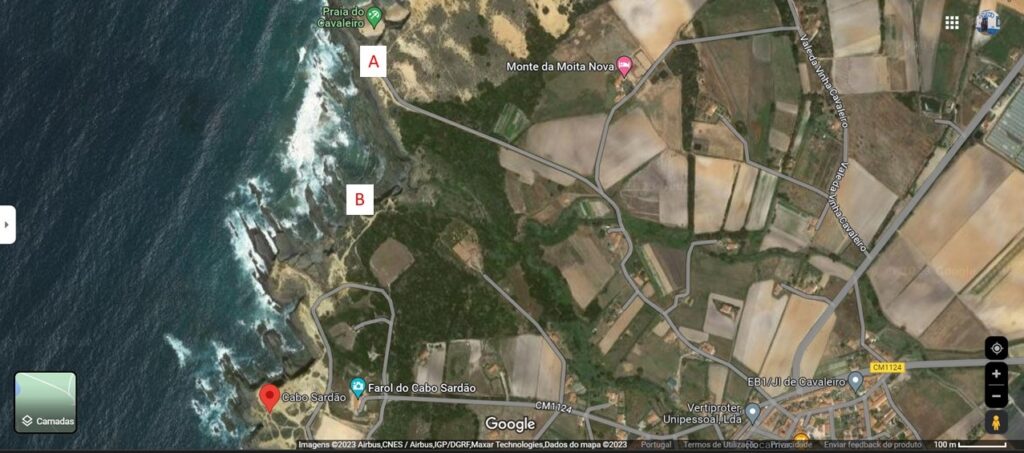
When I go to this area, I usually end up near location A, in the top of the cliff. From here, it is possible to look south and see the tall scarps jutting into the ocean. You can also walk along the sandy path to the north, where there are beaches of difficult access. It is possible to go down into them, especially during low tide, when they are more exposed; but be prepared to negotiate some tricky passages and hang on to a few ropes that have been fixed by the local fishermen.
Thus, try to plan your visit during the golden hour and low tide, for the best conditions. I was lucky to get some nice clouds in the sky for added interest. During my visit, I carried two cameras and two lenses, a wide-angle and a short telephoto. And the obligatory tripod and 10-stop neutral density filter for some nice long exposures.

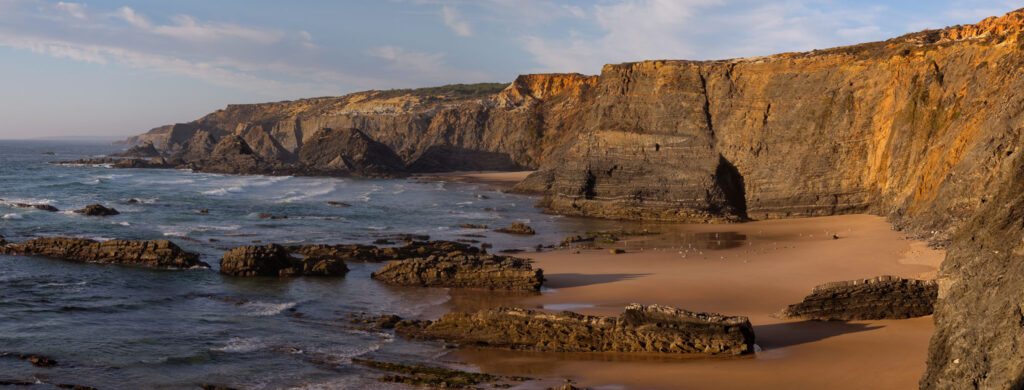
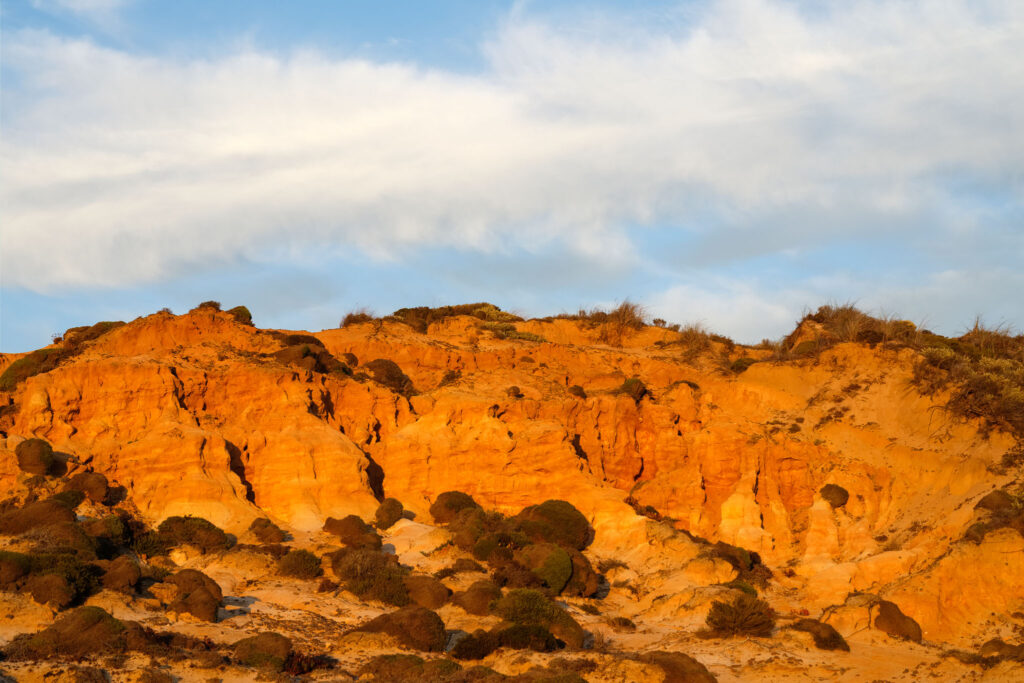
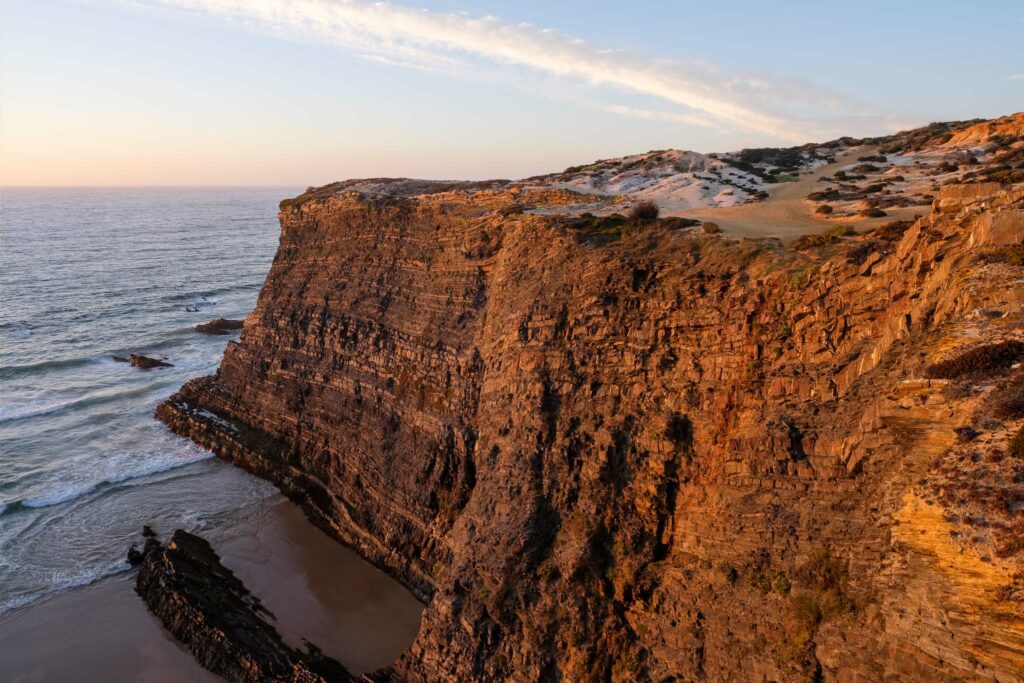
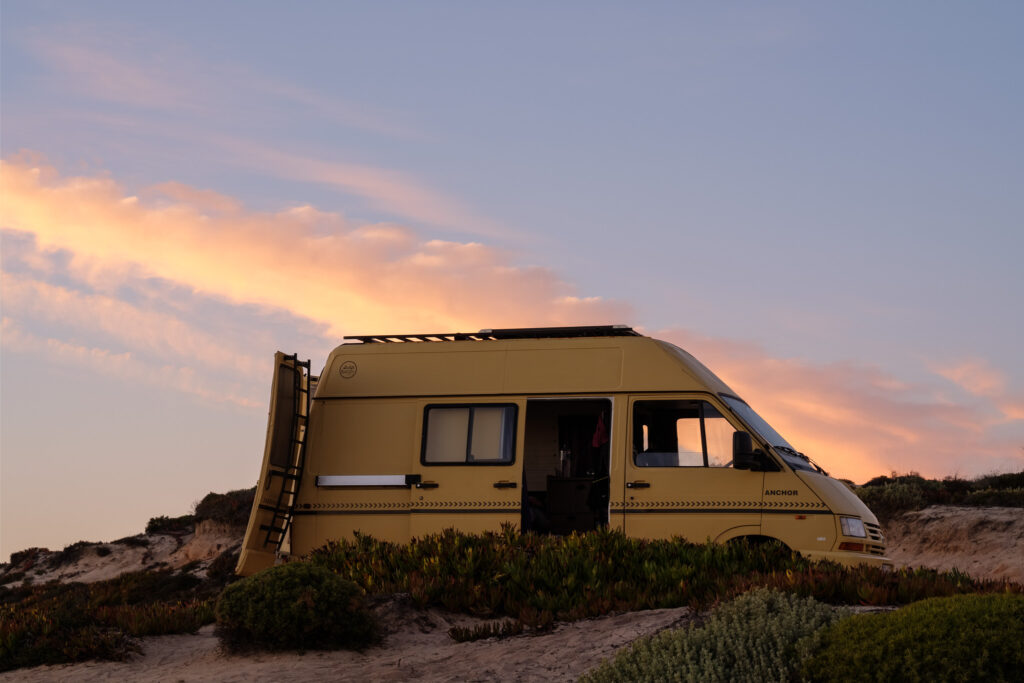
The next two photos show location B, where I decided to go the following day, also at the end of the day, to benefit from the low-tide. There is a trail that descends the cliff face and allows access to the beach. The folded nature of the rocks is quite distinct.
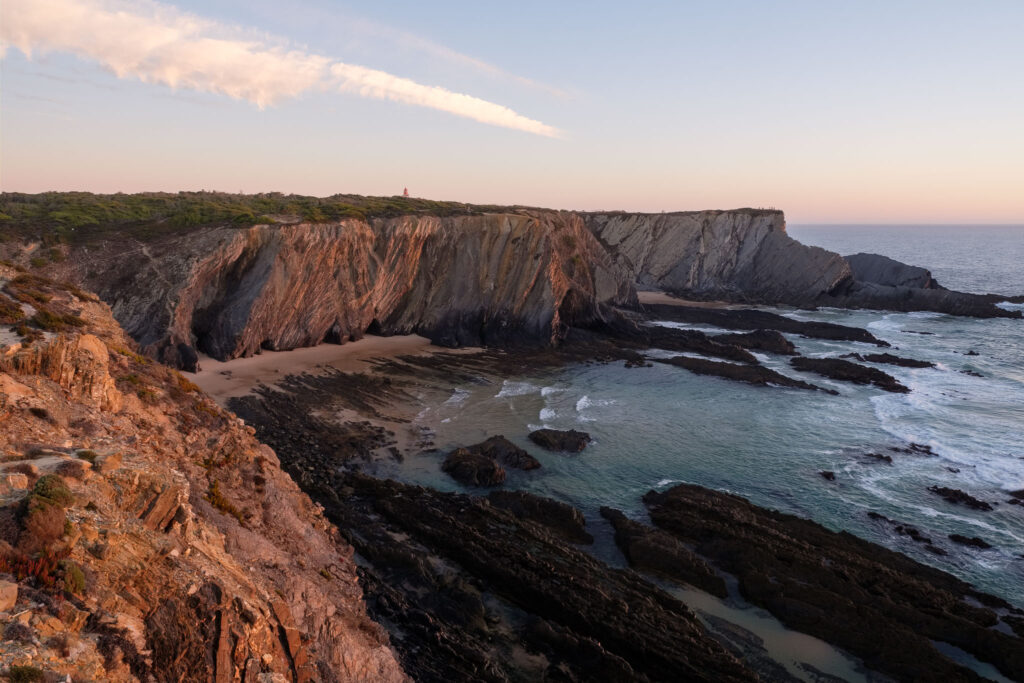
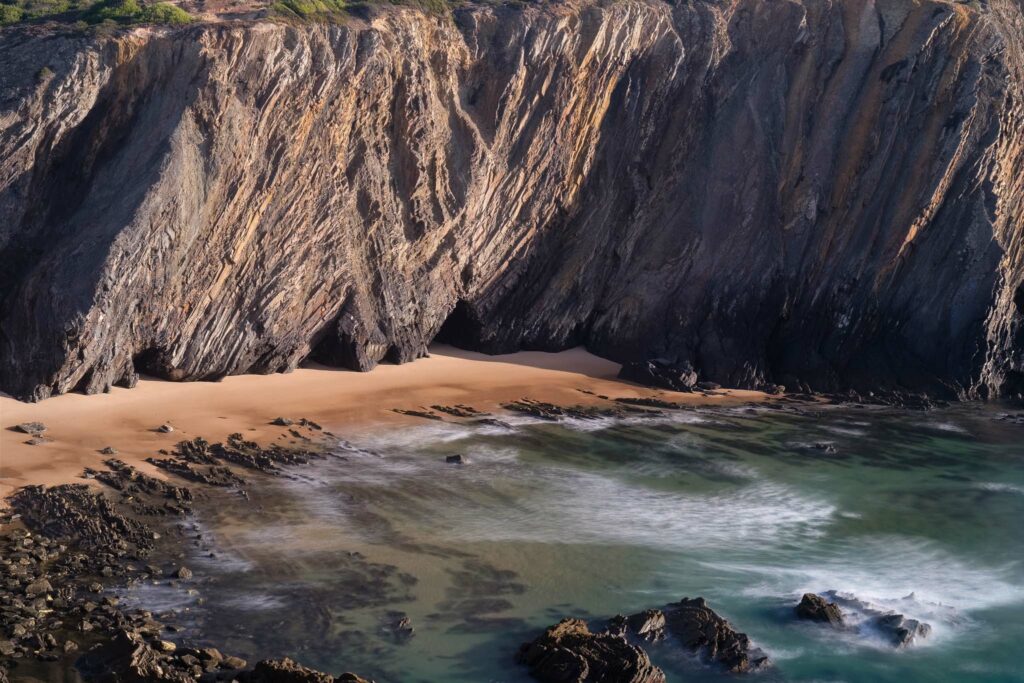
Fast forward 24 hours and I am back at Cabo Sardão, walking along the trail that will lead me to the beach at the base of the cliffs and location B. I had walked down there a couple of years back, but the tide was high at the time, so actually going to the beach was new to me. Which leads us to the old adage that even in familiar places, it is possible to find new things to visit and photograph. The path reaches a small valley where a narrow creek runs through; following its course, it is easy to arrive at the beach.
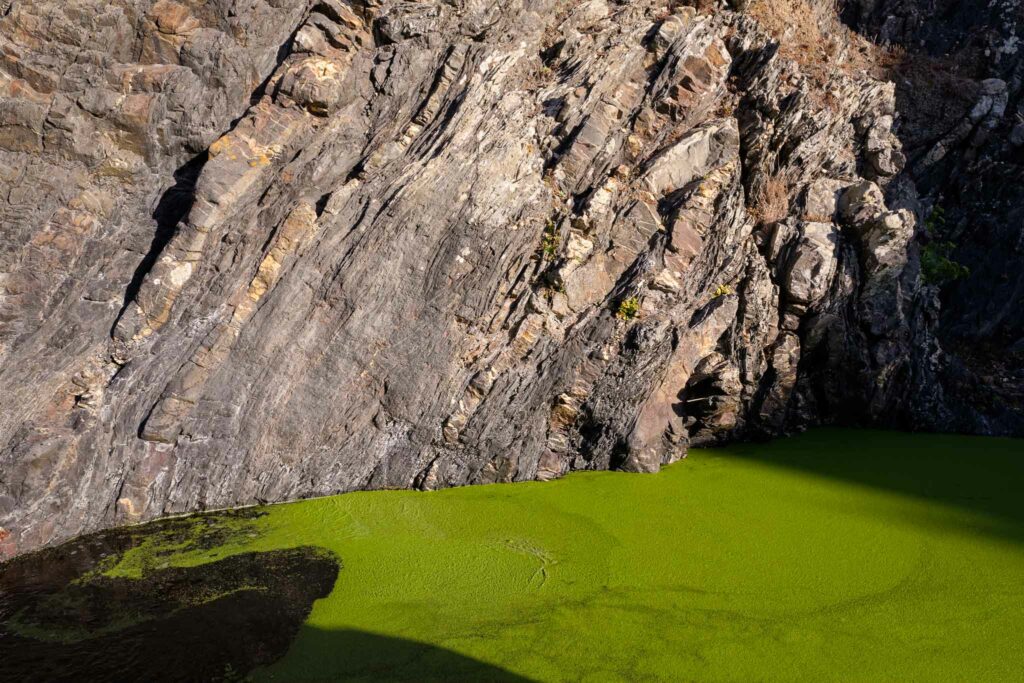
I spent the rest of the late afternoon, until sunset, exploring the area. The geology is spectacular, but as I said before, you don’t need to be a geologist to admire all the incredible details and surrounding landscape. Being on the beach and looking up the cliffs, will leave you speechless. Because the tide was so low, I was able to walk along the rocks a considerable distance, which was nice.
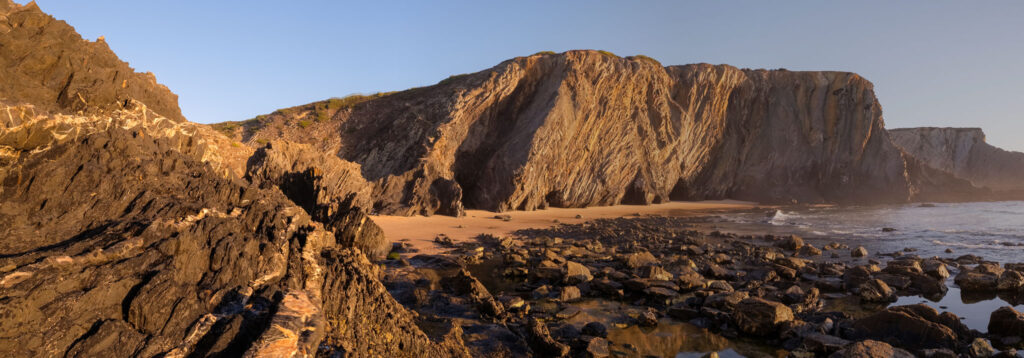
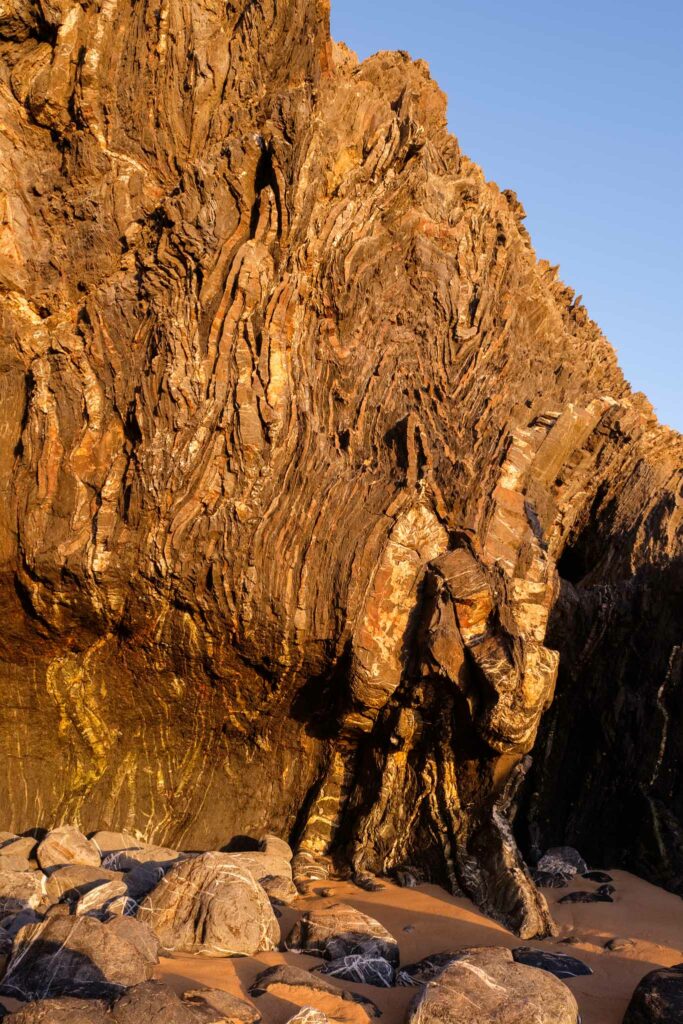
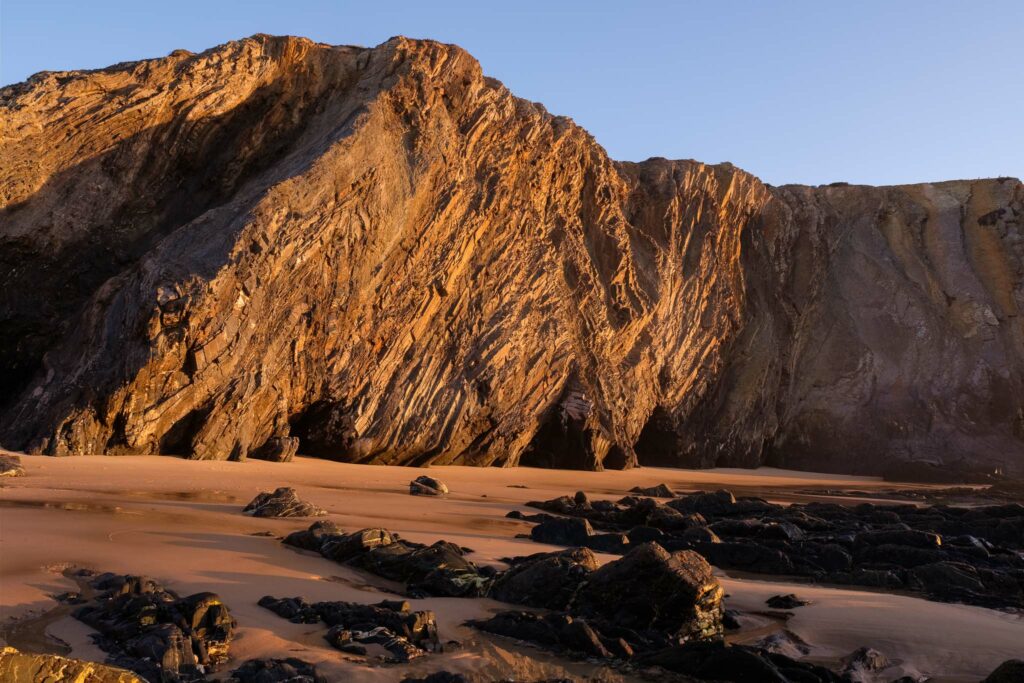
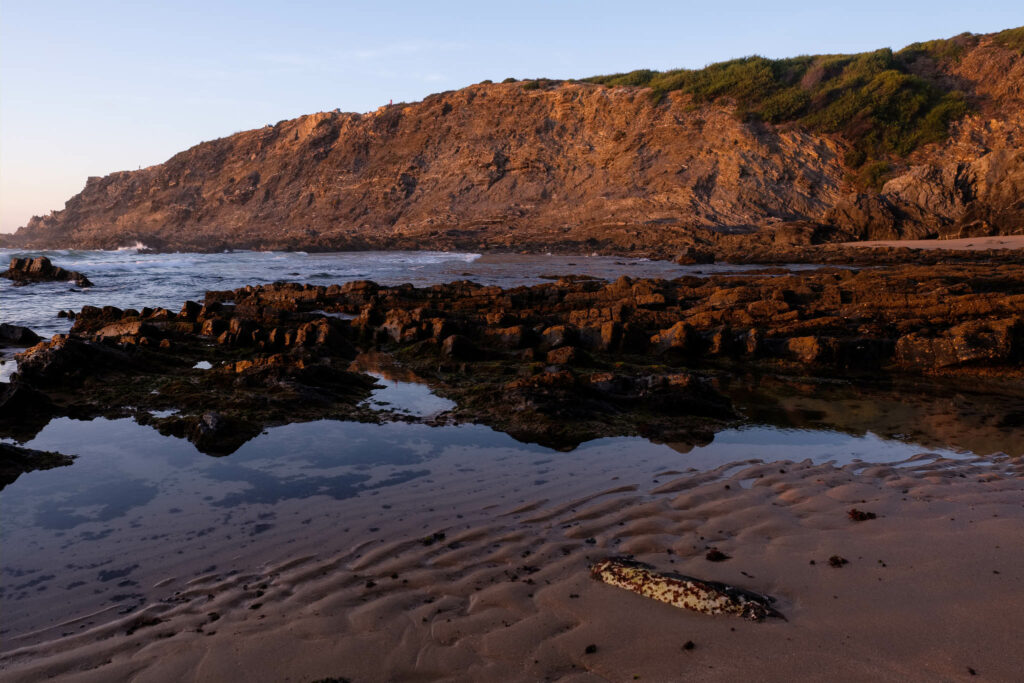
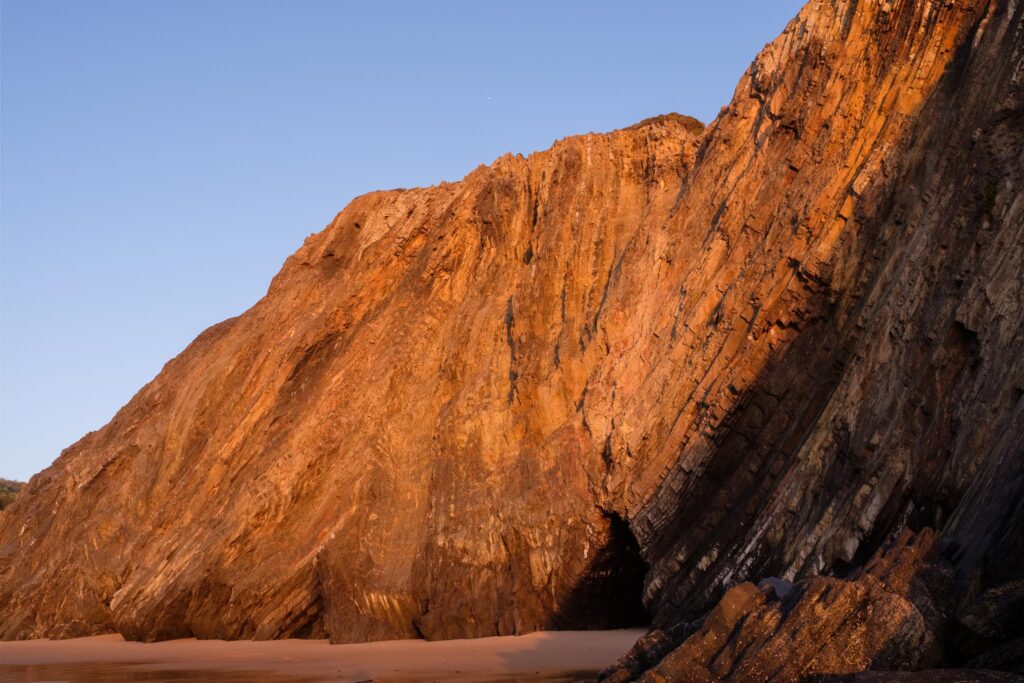
After this wonderful visit to this new location, I am certain I will come back many times, as there are so many things to explore.